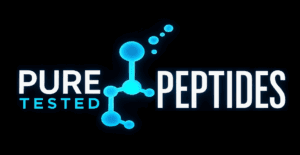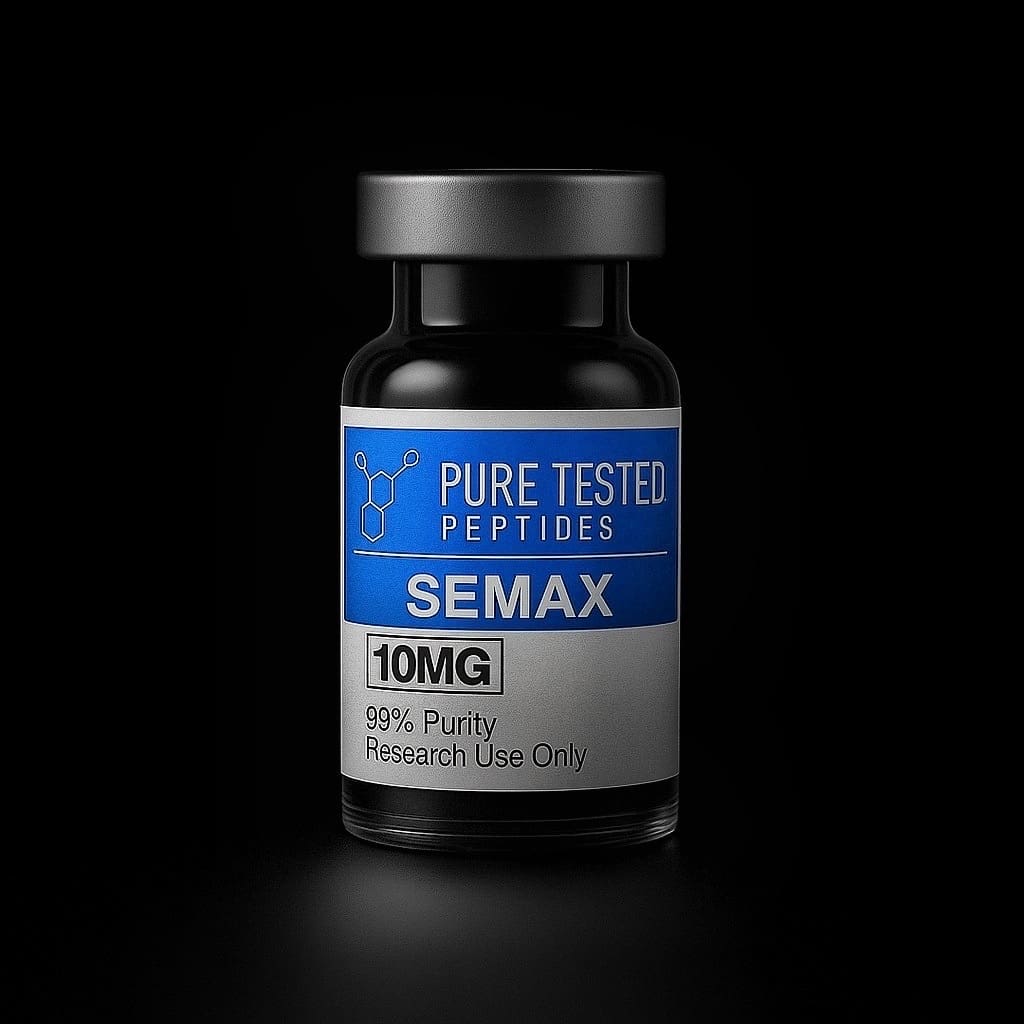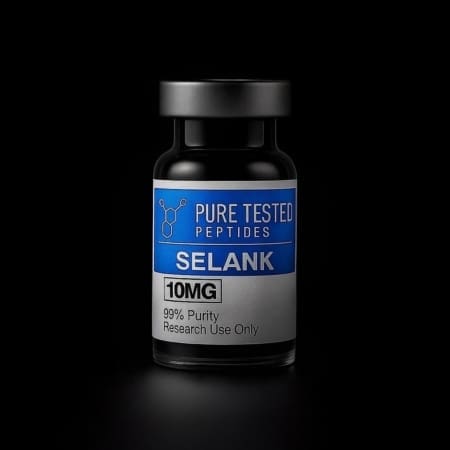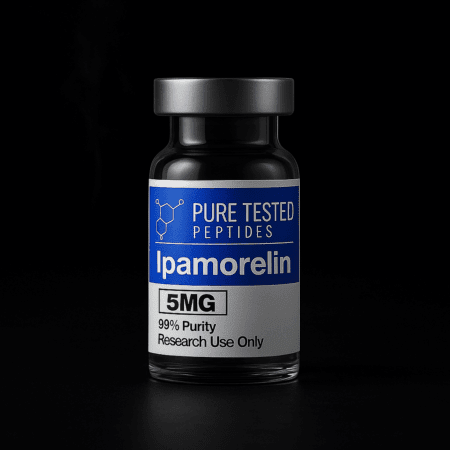Description
Semax (MEHFPGP) — Mechanism of Action & Evidence Summary
Scientifically grounded overview with PubMed links. For research purposes only — no medical advice or therapeutic claims.
ACTH(4–7) • PGP
BDNF/TrkB
Transcriptomics
What Is Semax?
Semax is a synthetic heptapeptide (Met–Glu–His–Phe–Pro–Gly–Pro; MEHFPGP) derived from the ACTH(4–7) fragment and extended with the Pro–Gly–Pro (PGP) motif. Published research most often investigates Semax in preclinical models and region-specific clinical studies, focusing on neurotrophin signaling, transcriptional regulation, and adaptive responses after experimental brain ischemia. This page summarizes mechanisms and selected sources for educational review.
Mechanism of Action (scientific detail)
1) Neurotrophin Signaling: BDNF/TrkB Axis
Multiple studies report that Semax can modulate brain-derived neurotrophic factor (BDNF) and associated receptor signaling (TrkB) in rodent brain regions. Changes in BDNF/TrkB signaling are frequently linked with synaptic plasticity programs and learning-associated gene expression in preclinical models.1
2) Transcriptomic Reprogramming After Ischemic Challenge
Genome-wide expression analyses in rodent ischemia models describe Semax-associated shifts in neurotrophin transcripts, receptors, and immune-response genes, suggesting a coordinated transcriptional response to injury in the research setting (e.g., altered expression of Bdnf, Ngf, and related receptors over time).2
3) ACTH-Derived Scaffold & PGP Motif
Semax combines an ACTH(4–7) core with the Pro–Gly–Pro tripeptide. This design has been hypothesized to influence peptidase resistance and receptor-interaction profiles, potentially shaping the time course of transcriptional and signaling effects observed in preclinical studies.
4) Network-Level View
Across studies, a consistent theme is network-level modulation—Semax appears to affect plasticity-, metabolism-, and immune-related gene clusters (context-dependent), rather than a single linear pathway. Readers should evaluate original datasets to understand magnitude, directionality, and tissue specificity.2
Evidence Snapshot (preclinical/selected studies)
- BDNF/TrkB modulation: Reports of increased BDNF expression and involvement of BDNF/TrkB signaling in hippocampal/cortical regions following Semax exposure in rodents.1
- Time-structured gene-expression changes: Transcriptomic work in rodent ischemia models shows Semax-associated regulation of neurotrophin and immune-related genes at multiple time points post-insult.2
PubMed References (1–2)
- Dolotov OV, et al. Semax, an analog of ACTH(4-10) with cognitive effects, modulates BDNF/TrkB signaling. PubMed 16996037.
- Medvedeva EV, et al. The peptide Semax affects expression of genes related to neurotrophic and immune responses (transcriptomic analyses in rodent brain). PMC3987924.
Tip: click the PubMed/PMC links to read full abstracts, methods, and limitations.







